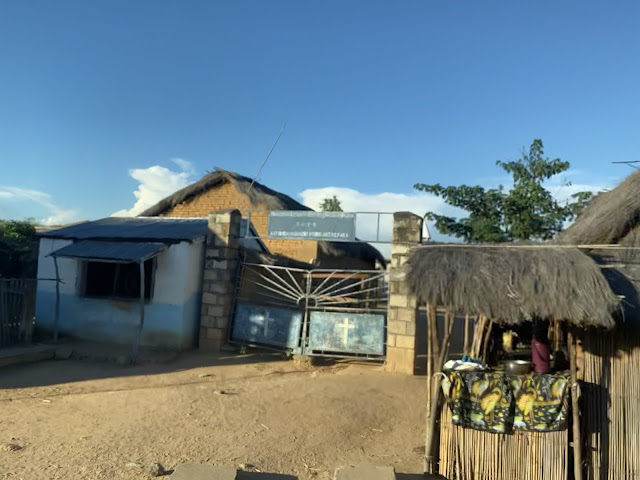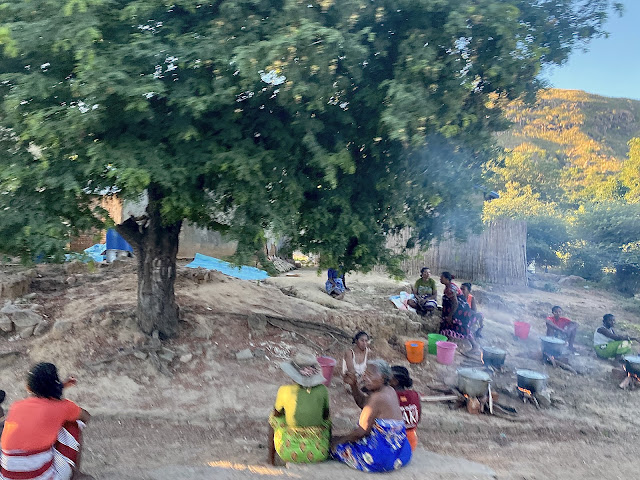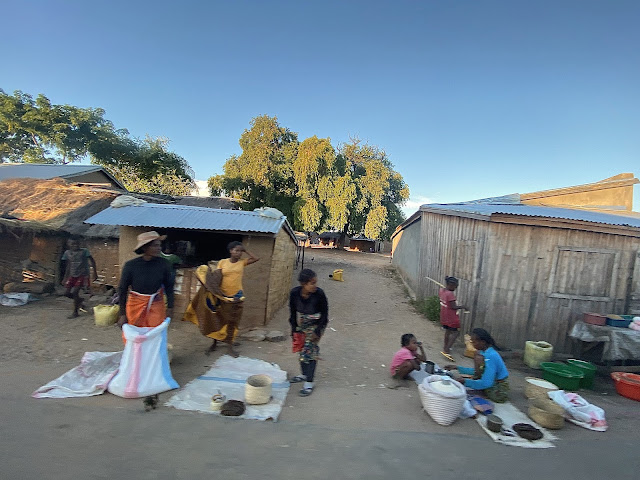DAY 2 Madagascar Road trip🇲🇬
11/05/2025 - Antsirabe - Morondava
Trip Plan: 450 km - about 9 to 10h drive : Today, we will drive through the west part to reach Morondava, the kingdown of the Baobab trees - A long drive but the landscape is amazing - everything you see is green - lunch at leisure - You will see the first baobab before arriving in Morondava - Checking at your hotel on your arrival - Dinner and overnight.
This morning we are heading to Morondawa in the western part of the country, expecting to spend more than 10 hours on the same road conditions.
After breakfast at the hotel, we had the chance to see two endemic African birds near the swimming pool, which was a great way to start the day.Hamerkop
The hamerkop (Scopus umbretta) is a medium-sized bird. It is the only living species in the genus Scopus and the family Scopidae. The species and family was long thought to sit with the Ciconiiformes but is now placed with the Pelecaniformes, and its closest relatives are thought to be the pelicans and the shoebill. The shape of its head with a long bill and crest at the back is reminiscent of a hammer, which has given this species its name after the Afrikaans word for hammerhead. It is a medium-sized waterbird with brown plumage. It is found in mainland Africa, Madagascar and Arabia, living in a wide variety of wetlands, including estuaries, lakesides, fish ponds, riverbanks, and rocky coasts. The hamerkop is a sedentary bird that often shows local movements.
Red fody
The red fody (Foudia madagascariensis), also known as the Madagascar fody in Madagascar, red cardinal fody in Mauritius, or common fody, is a small bird native to Madagascar and introduced to various other islands in the Indian Ocean. It is a common bird within its restricted range, and the International Union for Conservation of Nature has assessed its conservation status as being of "least concern".
Along the way, we saw Hemmerkop again feeding in the rice fields.
Once on the Highlands we stopped for a break and took some beautiful landscape photos. We also saw a frog of Love birds and some birds and a few common dragonflies.
Grey-headed lovebird
The gray-headed lovebird or Madagascar lovebird (Agapornis canus) is a small species of parrot of the lovebird genus. It is a mainly green parrot. The species is sexually dimorphic and only the adult male has grey on its upper body. They are native on the island of Madagascar and are the only lovebird species which are not native on the African continent. They are the smallest of the lovebird species. It is rarely seen in aviculture and it is difficult to breed in captivity.
Malagasy kestrel
Madagascar cisticola
Madagascar boasts a diverse dragonfly fauna, with approximately 190 species found on the island and an additional 36 species in the surrounding islands. Many of these, around 180 species, are endemic to the Malagasy region, meaning they are found nowhere else on Earth. Examples of dragonflies found in Madagascar include the Madagascar Emperor, various skimmers, dropwings, and damselflies
 |
| Take lunch at restaurant of the resort |
 |
Red fody againA life along the Morondava RiverThe Morondava is a river in the Menabe region, located in western Madagascar. It originates on the Makay Massif and flows northwestwards into the Indian Ocean near a town named after the river. |

 |
| Their church |
In the afternoon, they like to gather in groups in the courtyards of their houses by the roadside. Some bring their cooking ingredients to sell on mats on the ground. Some gather together to cook while children play nearby. It is a very warm and friendly scene.
Family activities would have to end after the sun went down because after that everything would be dark because they had no electricity.
Back to the first page >> http://www.jungjahut.com/2025/05/9-day-road-trip-in-madagascar.html




























































ไม่มีความคิดเห็น:
แสดงความคิดเห็น